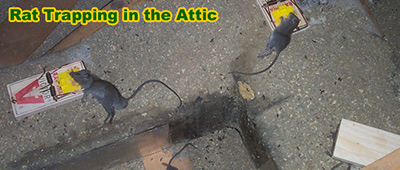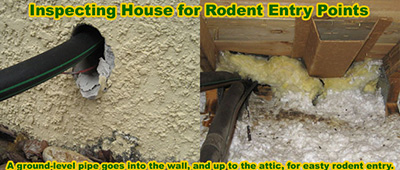If you hear scratching or scampering sounds in the ceiling at night, you've probably got rats or mice up there. This website
is all about removing rats from buildings, and especially the attic. The attic space is of course above the ceiling (the
ceiling is basically the floor of the attic), so go to the home page to read everything about removing rats from attics.
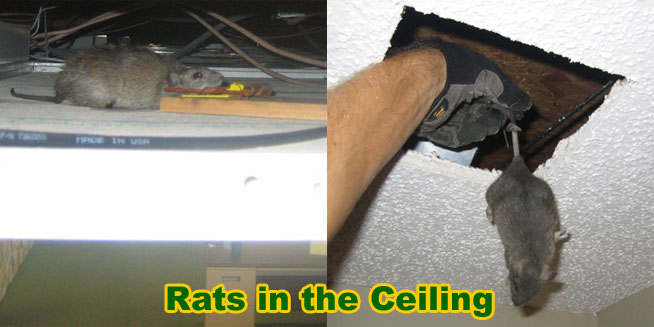
There are some special considerations in some ceiling cases however. In the above photo, on the left side, we see an example of a rat trapped in a drop ceiling at an office. And in the right, we see a dead rat removed from a ceiling.
DROP CEILING WITH TILES
Obviously you can't walk around in a drop ceiling, the way you can in an attic. But rats live in drop ceilings all the time - in commercial
buildings, offices, even basements. Here, it's a pretty simple matter to just get on a step ladder and remove some of the drop ceiling
tiles, and set traps on the other tiles. Quick and easy access.
Learn more: What do rats sound like?
THE CEILING IN BETWEEN 1st & 2nd FLOOR
Like rats in the walls, this is a case in which you can't easily set traps. You have to set traps in other areas that you do have access to,
such as in the attic, or at the rat points of entry and exit into the house. If a rat dies in a ceiling area, and there is no access to an
attic space above it, then I have to cut a hole in the ceiling to remove the rat. I've done this many, many, many times.
CAN A RAT CHEW THROUGH THE CEILING?
Actually, yes, and I have seen this a few times. Ceilings are almost always made of drywall, and a rat's hard teeth can make mincemeat out
of the stuff. Rats often chew their way in if they detect a food source. That said, it's not a terribly common behavior.
How to get rid of rats in the ceiling
Rats in the ceiling can be difficult to trap and remove especially if your home is one of the few that lacks a proper attic. Most traditional homes have spaces between the interior
ceilings and the roof which provide a chance to set traps. If your home has no crawl space or attic space and the rats are in the tiny area between shingles and drywall, you will
need to be more inventive on how you place the traps. Traps can be secured to the outside of the home, on the roof. For modern homes with this unique dilemma, the help of a professional
is highly advised. These experts will be able to determine where it is most practical to set traps and how to secure them in awkward places. Homes with attics can follow a few basic steps
starting with outside prevention methods. Even if rats are already inside of your home, outside cleanup and home repair is essential to preventing more rodents from moving in. Once the
home is patched the rats inside can be trapped and removed. Rats in the ceiling have to come out to feed. If an attic is involved, they will often use this space as a means of entering
other points of the building, and you can trap there, if the ceiling space is not accessible by hatch, cut hole, or vent removal. Traps can be set in the attic space, baited with peanut butter or marshmallows.
What type of trap for ceiling rat
The best kind of trap remains a snap trap, but access in the ceiling is difficult. If you have a rat in your home you need to take care of the situation before
it turns into an infestation. A single rat will leave a good trail of evidence in areas where it has been travelling. These areas are where you want to set up your traps.
People assume that rats eliminate waste and then look for clean areas to eliminate in, much like a dog. This isn't true. Rats use their feces and urine to make where they
have been and to establish safe pathways. If there is rat excrement, the rat will return to that area. Rats in the ceiling and in the wall will most likely have some kind
of activity level in the attic or ceiling space. This will be one of the best, if not most accessible, places to trap the rodent. If you can gain access through the
attic, great. Vent panels are the next best option, if you unscrew them. Snap traps are the most reliable traps on the market.
Mobile and simple, these devices can be purchased in bulk and then set accordingly throughout the home.
THE SAME APPLIES TO MICE
Although I wrote this site with rats in mind, such as the Roof Rat and Norway Rat, the same principles apply to other rodents, such as the house mouse. Mice
behave very similarly to rats, they're just smaller. Email me if you have any questions about how to remove a mouse from the ceiling, how get rid of mice in the
ceiling, or any rodent in ceiling issues.
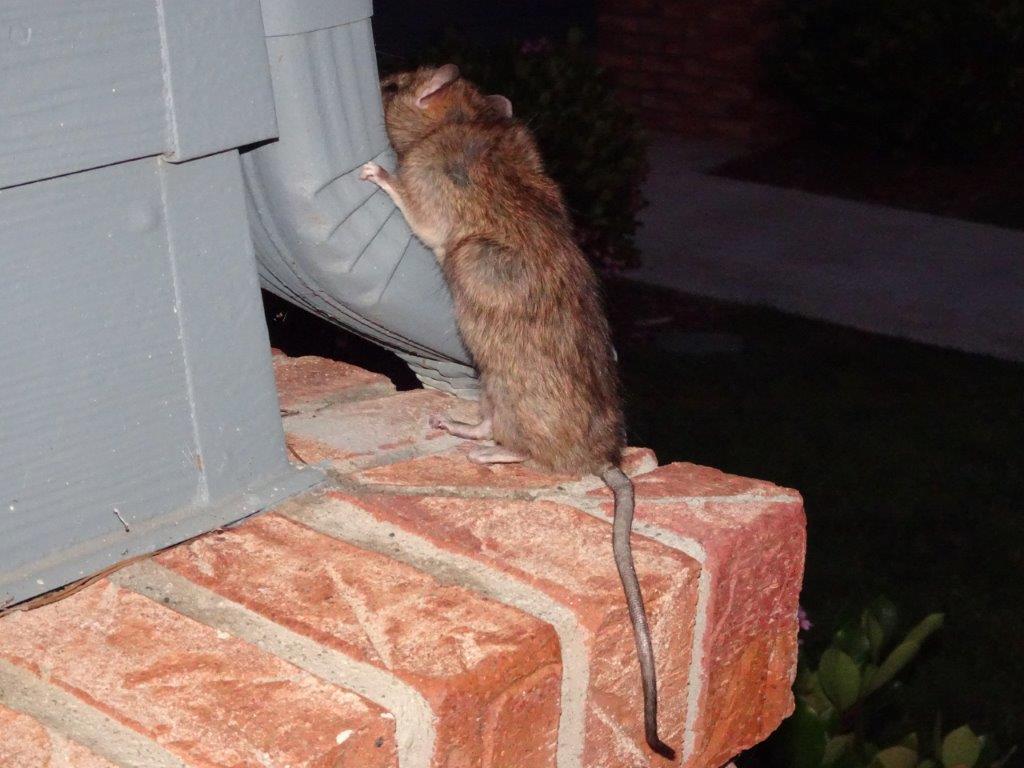
How do I get rats out of my attic?
You'll soon know if you have rats in the attic, because you'll hear them. They'll be scratching and scuffling around, and it's the sound that will often give them away. You won't see them until you've heard something, and then decide to go investigating. At this stage, you may see holes where the rats and other wild nails have gnawed through damage and broken materials in order to gain access to your home, and then you might notice urine stains, and rat droppings also. This is a common pattern of occurrences with home owners, and it is at this stage that they would usually turn to rather drastic measures in order to get rid of the problem. Poison is often laid down, and traps too, but these are two ways that are fast proving to be ineffective when it comes to dealing with rodents. With both of these methods, you will then need to deal with the rodents by hand.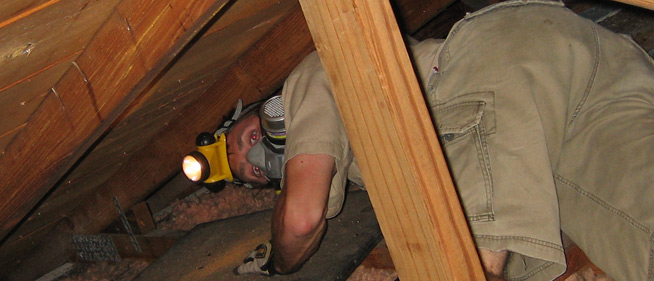
By using exclusion methods, rather than traps and poisons, you are technically getting rid of some of the hard work. You use a one-way door-style device over the main hole the rats are using to get in and out of your home. The remaining holes - the ones the rats are using sporadically, will be sealed. The rats will leave your home, one by one, on the hunt for food, and when there are no more rats left in your home, because the exclusion devices let them out with no way of getting back in, the rat problem has gone. All that is left for you to do is clean up after the pesky things, although that can be quite the task by itself. You will need to ensure all traces of the rats urine is removed, because the pheromones present within the stains will encourage other rats to come along an try to set up home too. You will also need to ensure there are no rat droppings left behind, or nesting material, and in serious cases, this can mean the complete removal of the insulation in your attic.
Of course, before all of these things, you will need to ensure there are no rat babies present. If you remove the mother without the young, the young will still die in your home. You will still have all the same rat problems present, but these rat babies will grow up and they will have rat babies of their own. It doesn't take long for one rat to turn into a great number of rats, and that brings with it a very serious threat of disease, as well as a truck load of damage which you will then need to fix.
Go back to the Rats in the Attic home page.


